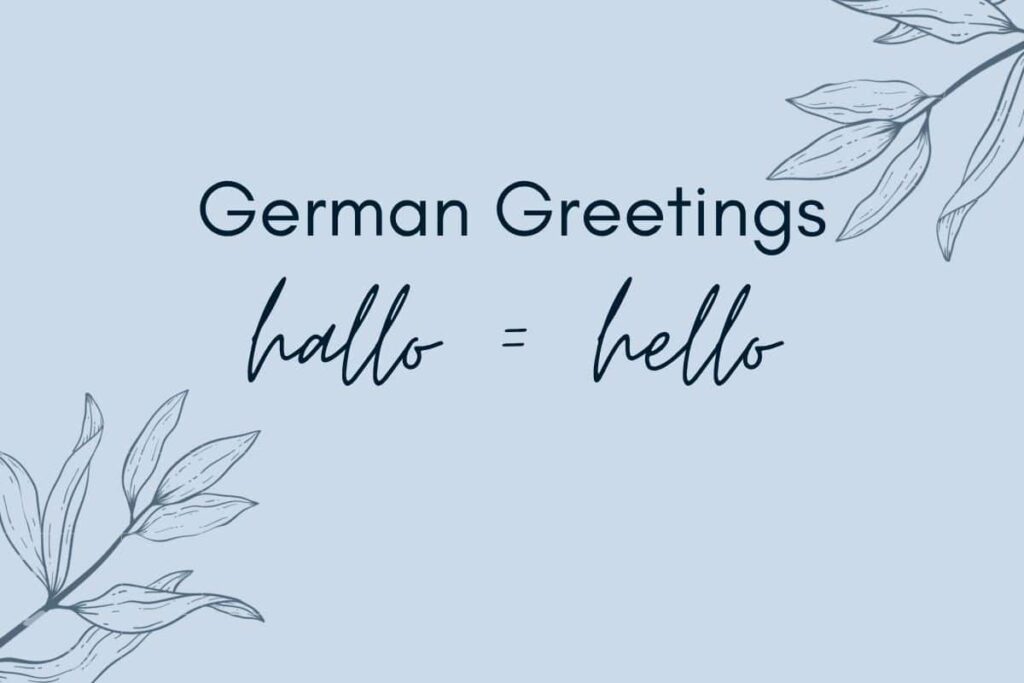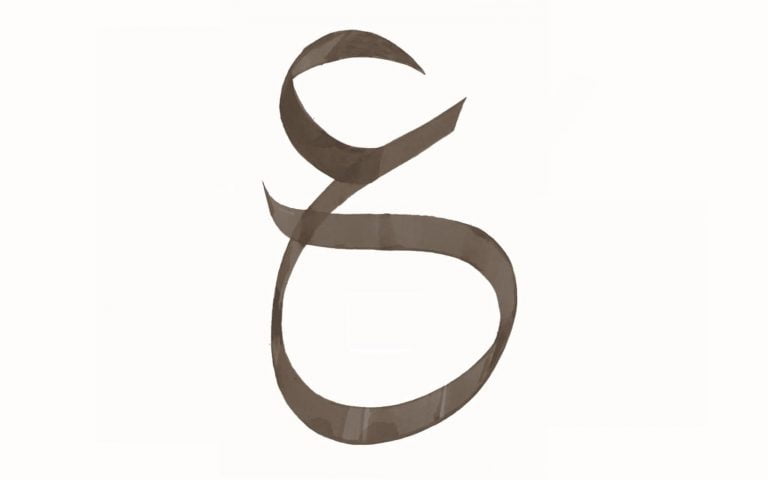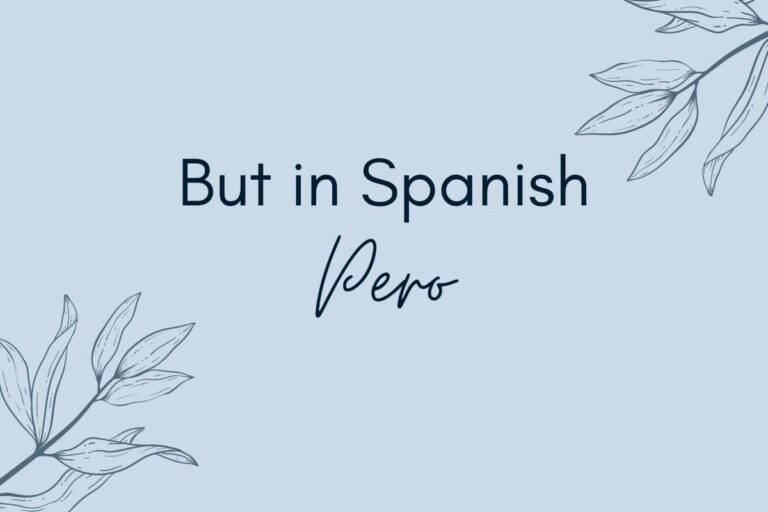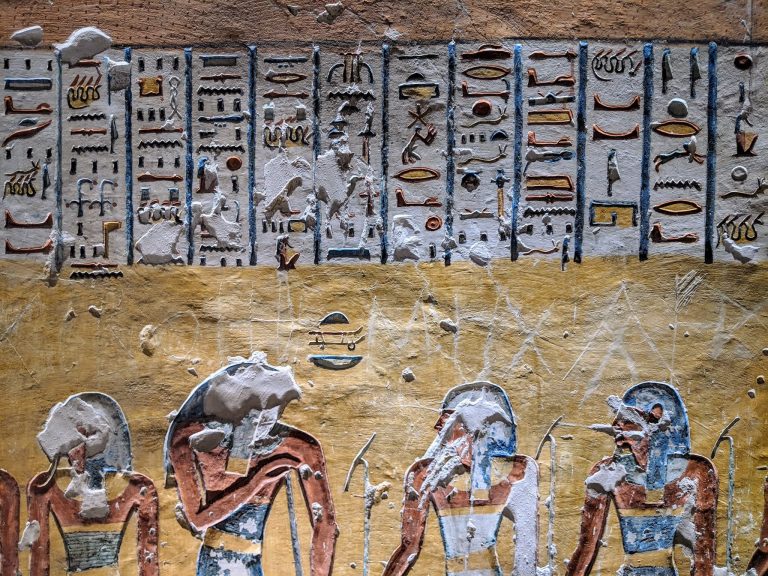24 Ways to Say Hello in German – From Casual Slang to Formal
The moment you arrive in Germany (or another German-speaking place, like Austria, parts of Switzerland, or Lichtenstein), you may think that hello in German is just “hello” with what may be a German accent. “Hallo!”
Or if you’ve studied some German, you might already know this greeting. But have you heard of Na? Or Moin?
Saying hello can break the ice in new situations with new people and create a friendly atmosphere from the beginning, especially if you use a less common way of saying “hello”.
The German language offers a variety of greetings for each situation. In this post, we’ll go over 24 different ways of saying hello in not only Germany but in Austria and Switzerland as well.
Learning German? Get our free core German Vocab List.
Hello in German at a Glance
Below is a table with all the major ways of saying “hello” in German.
German | English |
General Hello in German | |
Hello | |
Hello | |
Hello | |
Hi | |
Hey | |
What's up? | |
Yo | |
Hello | |
What's up? | |
Blessings | |
Greetings | |
Hello/Goodbye | |
Hello in German by Asking How Are You | |
Everything's good? | |
How's it going? | |
What's new? | |
Hello in German for Different Times of Day | |
Good morning | |
Good day | |
Good evening | |
Hello in Switzerland | |
Hi | |
Hello | |
Hello | |
Hello in Austria | |
Hello/Goodbye | |
Hello | |
Hello | |
Contents
The General Hello in German

Hallo
Hallo is the most common and widely used form of saying hello in German.
Although “hallo” is not formal, it can be used in almost all settings and is used in the workplace, in public, or with friends and family.
Hallöchen
Hallöchen is actually the German diminutive of Hallo.
It is a colloquial word used in a joking manner in informal settings. It can also be used when you are surprised to see someone or receive an unexpected visit.
Halli-Hallo
Halli-Hallo is similar to hallöchen and gives dad joke vibes. It is an informal and joking way of saying hello.
Hi
Hi is the preferred way to say hello for younger folks. You will hear it between friends and family but also in informal workplaces.
Smaller firms with a younger demographic are usually quite informal in Germany and might use hi as their preferred greeting.
Hey
This one doesn’t need any translation – hey is “hey” both in English and German. Similar to hi, young people predominantly use it.
Na
Na? is most commonly asked as a question. Similar to “what’s up?” or “how’s it going?” it doesn’t always require an answer. It is used in informal settings, mostly between younger people. Although it has its origins in the North of Germany.
Jo
Jo , the second two-letter greeting in this list, is the most informal one here.
Similar to the English “Yo”, mostly young people who know each other use “Jo!”. Don’t try this one out on a business trip to Frankfurt.
Moin
Moin is the preferred greeting of people in the North of Germany. Although you might initially believe that it resembles Guten Morgen (good morning) it is actually used as a simple “hello” all day long. Sometimes it is shortened to Moi.
Grüß Gott
Grüß Gott is another popular greeting in the South.
While it means “blessings” it is more of a cultural than a religious thing, and is used by people from all kinds of religious backgrounds. This expression is used in all settings regardless of formality.
Grüß Dich
Grüße Dich is similar to Grüß Gott but omits the holy presence and can be loosely translated with something like “greetings”. This expression too is found predominantly in the South of the country.
Servus
In the South of Germany Servus is a popular way of saying “hello”. Did you know that variations of it are also used in Austria, Poland, Slovenia, Croatia, Hungary, Slovakia, and Romania?
Hello in German by Asking “How Are You”
In German, similar to in many other languages, asking someone How are you? or What’s Up? is a common way of greeting someone.
Alles klar?
“Everything good?” – Alles klar? is another popular way of saying “hello” in German. You can choose whether to give a longer or shorter answer to this. A simple Ja, alles klar (yes, all good) is enough.
Wie geht’s?
Technically Wie geht’s? means “How is it going?” but it is just as often used as a greeting.
Many Germans, particularly in the South of the country, will respond to Wie geht’s with an actual account of how they are doing — so avoid this expression if you’re not up for small talk.
Was gibt’s Neues?
Was gibt’s Neues? is even more of an invitation to have a conversation. This popular expression means “What’s new?” and is frequently used to say hello.
Hello in German for Different Times of Day
Guten Morgen
Guten Morgen – which you might already have guessed means “good morning” and is a way of saying “hello” in the morning.
In Germany, it is considered polite to always say a greeting as you enter a business or a room. Guten Morgen is used until around noon.
Read next: German Manners 101 – Essential Guide to German Etiquette
Guten Tag
Guten Tag is the more formal way of saying hello in German. It literally translates to “good day” but is used similar to “hello” in more formal settings, especially when you meet someone for the first time. Most businesses use Guten Tag with their clients.
Guten Abend
Guten Abend is used to say “good evening” and the greeting can be used starting around 6pm.
Guten Abend is a more formal expression than Guten Tag and Guten Morgen and is frequently heard when you enter a restaurant at night.
Hello In German (Switzerland)
All the expressions that are used in Germany can also be used and will be understood in Switzerland and Austria. But there are a couple of local expressions that we will show you below.
Hoi
Hoi is an informal greeting that means “hello”.
We like it because it’s easier to pronounce than some of the others. The word hoi is relatively new, and has only been present since the 20th century.
Grüezi
Grüezi is the most common and popular Swiss way of saying “hello”. Be careful, if you want to use Swiss and Austrian greetings, make sure that your pronunciation is correct, Grüezi is actually pronounced “Grü -ezi”.
Grüessech
Grüessech is another variation of Grüezi and is most often heard in and around the Swiss city of Bern. Both versions are formal expressions and not to be confused with the German Grüss Dich which is informal.
Hello in German (Austria)
Servas
Remember the word Servus from earlier in the post? Servas is its Austrian neighbor. It is the most widely used expression, both formal and informal. Servus and Servas can also be used to say “goodbye”.
Read next: 14 Ways to Say Goodbye in German – Beyond Auf Wiedersehen
Griass Di
Griass Di is an informal greeting reserved for friends and family derived from Grüss Dich. You will hear it in Austria and at times in the German region of Bavaria.
Ciao
Ciao is the Italian-influenced way of saying “hello” in Austria. It is most often used in Vienna and considering that a quarter of Austrians live in Vienna, it’s worth knowing about it. It can be used informally.
Conclusion
Did you know that the first-ever printed book was in German? No wonder there are so many words to say a simple “hello”. How do you choose the correct one?
When in doubt, smile at the other person and see what their greeting is. Whatever they choose, you can safely mimic it and say it back at them. Over time you’ll develop a good feeling for which greeting is appropriate in every situation.






